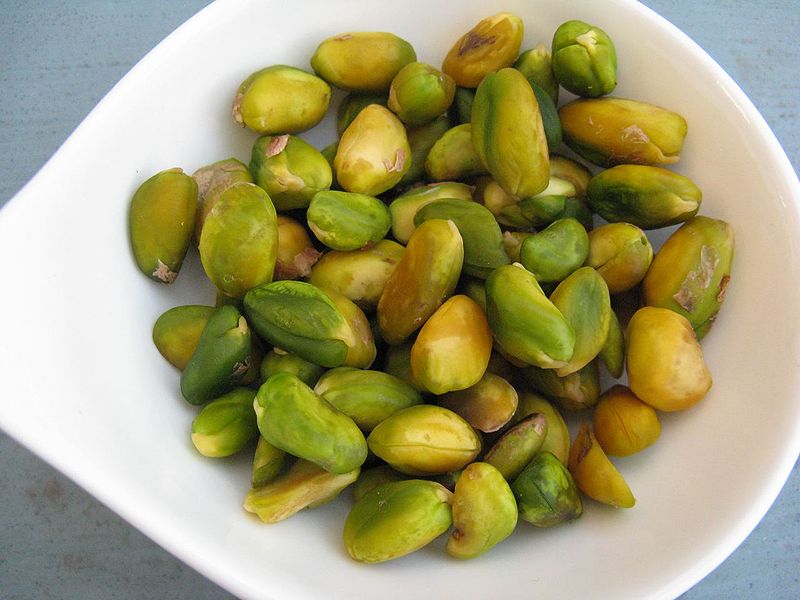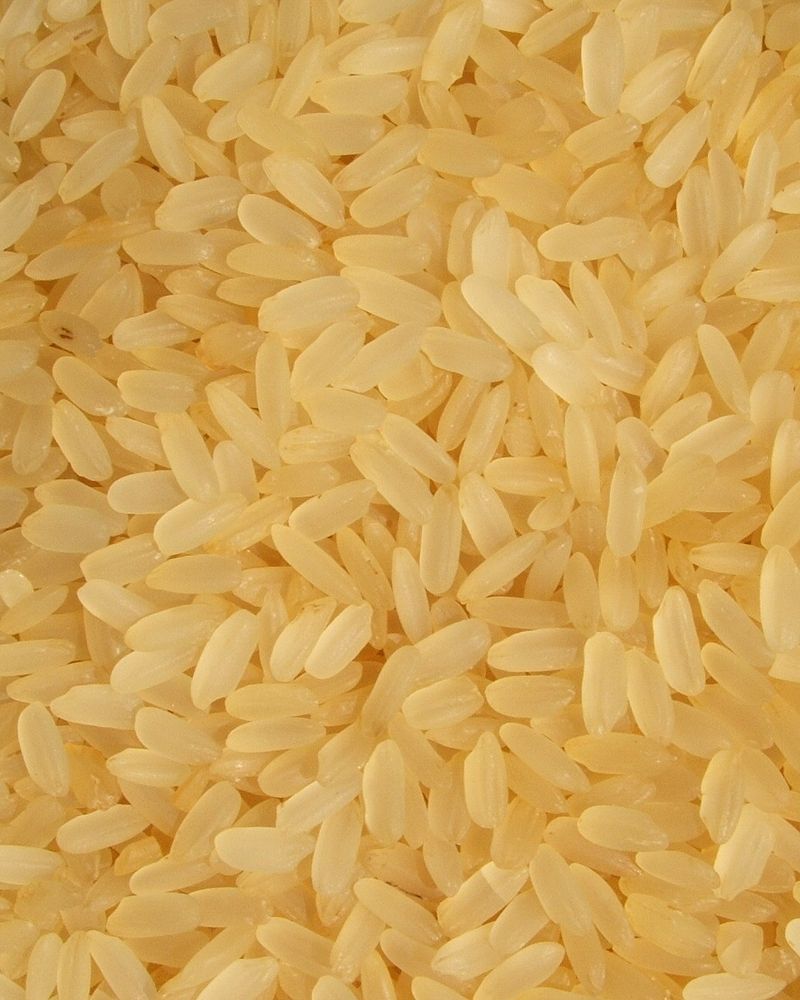Key Difference – Blanching vs Parboiling
The terms blanching and parboiling are frequently used interchangeably although there lies a difference between them. The key difference between blanching and parboiling is that blanching denotes the method of rapidly dipping a food item into boiling water and then rapidly chilling it by dropping it into ice water. Parboiling refers to the rapid boiling process, but not to the rapid chilling process. Parboiling is frequently used to pre-cook a food item which will then be cooked in a different way such as boiling, stewing, grilling or stir-frying. Parboiled rice is the best example for a parboiling product. Blanched food is an uncooked/mild cooked product whereas parboiled food is a pre-cooked product. both cooking methods are utilized in home cooking as well as in the food industry, yet are closely interconnected. The purpose of this article is to identify the difference between blanching and parboiling.
What is Blanching?
Blanching is where food is boiled in 100°C water for a short time (1-2 minutes) and then put immediately in ice cold water to halt any further nutritional losses and cooking. Some blanched vegetables, the excess water, have to squeezed out before consumption. It’s often used for fruits and vegetables that are going to be eaten raw or used for salad preparation. It’s a technique used to deactivate colour changing enzymes such as polyphenol oxidase enzyme. Blanching can also be used for removing off-colour and off-flavours (bitterness) from foods, and to soften vegetables before roasting them.

Freshly blanched pistachios for dessert cookery
What is Parboiling?
The word is frequently used when mentioning parboiled rice. Typically, the purpose of parboiling is to cook an item to speed up the cooking time for the subsequent cooking method. The food items are put into boiling water and cooked until they begin to soften, and then removed before they are fully cooked. Parboiling is frequently used to partially cook or pre-cook a food item which will then be cooked a different way. Parboiling differs from blanching as one does not rapid cool the food items using ice water after removing them from the boiling water. Raw rice or paddy is parboiled, and this process usually changes the colour of rice from white to light reddish. Approximately, half of the world’s paddy production is parboiled and the treatment is practiced in many parts of the Asian and African countries such as Sri Lanka, India, Bangladesh, Pakistan, Malaysia, Nepal, Myanmar, Guinea, South Africa, Nigeria and Thailand.

Parboiled rice
What is the difference between Blanching and Parboiling?
Blanching and parboiling process may have substantially different cooking conditions and some organoleptic properties of finished products. These differences may include,
Definition of Blanching and Parboiling
Blanching: Blanching means peel remove by scalding or immerse temporarily in boiling water
Parboiling: Parboiling means boil until partially cooked or boil in a half of time of cooking
Characteristics of Blanching and Parboiling
Purpose
Blanching: The objectives include enhancing the color of fruits and vegetables, preventing enzymatic browning, deactivating undesirable enzymes such as deactivate colour changing enzymes, making peeling easier, softening vegetables before roasting them, reducing or removing undesirable strong odors (Eg: onion, cabbage) or setting the color of fruits and vegetables.
Parboiling: The objectives include speeding up the cooking time for the subsequent cooking method, increasing the nutritional value of the food (Eg: rice) and increasing the shelf-life of the product. Rice is parboiled to enhance texture, increasing the milling yield and reducing head rice loss.
Processing Steps
Blanching: Two basic steps of blanching are boiling and rapid cooling
Parboiling: Three basic steps of parboiling are soaking, steaming or boiling and drying
Use of Food Additives
Blanching: Sometimes, calcium is added to reduce the softening of vegetables and magnesium salt is added to prevent degradation of chlorophyll or retention of green colour.
Parboiling: Food additives are not commonly used.
Time and Temperature Conditions
Blanching: The food is boiled for 30 seconds to 1 minute and immersed in 0-4°C water. Hot water at temperatures ranging typically from 70°C to 100°C is used for boiling.
Parboiling: Food is boiled for 3-20 hours depending on the method of parboiling such as traditional method or modified high pressure or steam generation method. Therefore, parboiling process takes more time and use high-temperature hot water or steam compare to blanching.
Cooking Stage of the Final Product
Blanching: Only the outermost layer of the food is cooked.
Parboiling: The entire food is cooked and known as a pre-cooked product.
Nutritional Loss
Blanching: Some water soluble and heat sensitive nutrients can be destroyed (Eg: Vitamin C, Vitamin B)
Parboiling: Minimum nutritional losses can be observed. Nutritional value of parboiled rice is enhanced because vitamins in the husk are transferred to the center of the rice grain during the process of parboiling.
Chemical Changes
Blanching: Deactivation of enzymes is the major chemical changes that occur during blanching.
Parboiling: The starch content in parboiled rice become gelatinized, and then retrograded during storage. As a result of gelatinization, alpha-amylose molecules leak out of the starch grain complex. Cooling the parboiled rice storage brings retro-gradation where amylase molecules re-associate with each other and form a closely packed arrangement. This growth the development of type 3-resistant starch which can perform as a prebiotic and benefits gut health in humans.
Examples of Blanching and Parboiling
Blanching: Mainly fruits and vegetables
Parboiling: Mainly rice and nuts
In conclusion, either blanching or parboiling, food undergoes the boiling process, and the difference is that blanched food is after that given an ice bath to prevent the overcooking, a step not required when parboiling. Thus after the process of parboiling, the food is fully or partially cooked.
References Desrossier, N. W. (1965). The technology of food preservation, The AVI Publishing Company, 150-151. Eliasson, A.C. (1986). Viscoelastic behaviour during the gelatinization of starch. Journal of Texture Studies, 17, 253–265. Food Protection Training Manual (PDF). New York City Department of Health and Mental Hygiene. 2010. Miah, M., Haque, A., Douglass, M., and Clarke, B. (2002). Parboiling of rice. Part II: Effect of hot soaking time on the degree of starch gelatinization. International Journal of Food Science & Technology, 37(5), 539-545. Pillaiyar, P. (1981). Household parboiling of parboiled rice. Kishan World, 8, 20–21. Image Courtesy: “Blanched pistachios” by Nadiatalent – Own work. (Public Domain) via Commons “Riso parboiled” by Luigi Chiesa – Own work. (CC BY-SA 3.0) via Wikimedia CommonsncG1vNJzZmivp6x7pbXFn5yrnZ6YsqOx07CcnqZemLyue8OinZ%2Bdopq7pLGMm5ytr5Wau26uy5qlnKCZo7Rurc2dZK%2BrXaWus67OoqOippdk